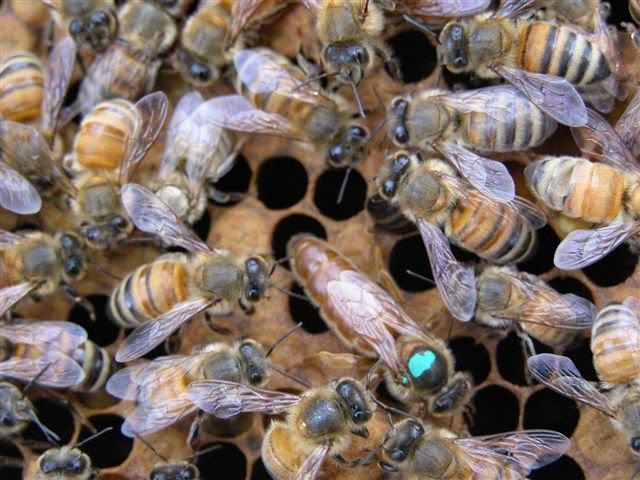Post by Alan on Nov 22, 2008 16:46:05 GMT -5
Amongst the most important historical, anthropological, archiological, and agriculture discoveries of recent times is the study of Terra Preta (or Dark Soil), a type of soil discovered in the Amazonian River Delta area.
This soil has been an enigma in and off itself for centuries and is only now becoming well known and understood (to an extent). The soil seems to be man made with agricultural purposes in mind making us rethink just exactly what natural and pristine conditions are (man made evolutionary ideas, agricultural alchemy) in a place as isolated and as previously thought (due to poor and thin soils) uninhabitable as the Amazoinian basin. There is no doubt that there were large and herto undiscovered, agriculturally advanced, civilizations just as described by Francisco de Orellana (could the golden city of El Droado actually exist? After all if you don't have to worry about feeding yourself you do have time to work on other projects! Could these high population levels and advanced agriculture have led to advanced civilization altogether? Atlantis?).
Apparently no one has yet to exactly discover, unravel, or truly understand how Terra Preta was made. We do know that it is a stable soil, more stable than any soil on earth, and that it does self replicate (living inert material? Indeed!). 1,000 years after it was deposited it is still just as fertile and active as ever, only needing to lie fallow for six months at a time (if at all, one farmer described farming the same plot for 40 years without break!).
Anyhow, there seem to be modern organic growers that are experimenting with bio-char (a fancy term for charcoal) and I have spent a good deal of my day researching all of this and providing links, currently my brain is formulating ideas about how this could work on a small farm like Bishop's Homegrown, I already have a good idea on how to create the active carbon charcoal I would need to start the process. 2009 will see trials with these methods on the small scale, I presume success, in which case the trials will grow into the large scale and eventually a soil amending traditional practice.
What follows are some of what I found on the net, the first is from NatGeo and I highly reccomend watching the replay of the program for more info:
news.nationalgeographic.com/news/2008/11/081119-lost-cities-amazon_2.html
en.wikipedia.org/wiki/Terra_preta
en.wikipedia.org/wiki/Dark_earth
www.css.cornell.edu/faculty/lehmann/terra_preta/Flyer%20terra%20preta%20landuse%20strategy.pdf
www.css.cornell.edu/faculty/lehmann/terra_preta/TerraPretahome.htm
terrapreta.bioenergylists.org/
This soil has been an enigma in and off itself for centuries and is only now becoming well known and understood (to an extent). The soil seems to be man made with agricultural purposes in mind making us rethink just exactly what natural and pristine conditions are (man made evolutionary ideas, agricultural alchemy) in a place as isolated and as previously thought (due to poor and thin soils) uninhabitable as the Amazoinian basin. There is no doubt that there were large and herto undiscovered, agriculturally advanced, civilizations just as described by Francisco de Orellana (could the golden city of El Droado actually exist? After all if you don't have to worry about feeding yourself you do have time to work on other projects! Could these high population levels and advanced agriculture have led to advanced civilization altogether? Atlantis?).
Apparently no one has yet to exactly discover, unravel, or truly understand how Terra Preta was made. We do know that it is a stable soil, more stable than any soil on earth, and that it does self replicate (living inert material? Indeed!). 1,000 years after it was deposited it is still just as fertile and active as ever, only needing to lie fallow for six months at a time (if at all, one farmer described farming the same plot for 40 years without break!).
Anyhow, there seem to be modern organic growers that are experimenting with bio-char (a fancy term for charcoal) and I have spent a good deal of my day researching all of this and providing links, currently my brain is formulating ideas about how this could work on a small farm like Bishop's Homegrown, I already have a good idea on how to create the active carbon charcoal I would need to start the process. 2009 will see trials with these methods on the small scale, I presume success, in which case the trials will grow into the large scale and eventually a soil amending traditional practice.
What follows are some of what I found on the net, the first is from NatGeo and I highly reccomend watching the replay of the program for more info:
news.nationalgeographic.com/news/2008/11/081119-lost-cities-amazon_2.html
en.wikipedia.org/wiki/Terra_preta
en.wikipedia.org/wiki/Dark_earth
www.css.cornell.edu/faculty/lehmann/terra_preta/Flyer%20terra%20preta%20landuse%20strategy.pdf
www.css.cornell.edu/faculty/lehmann/terra_preta/TerraPretahome.htm
terrapreta.bioenergylists.org/








